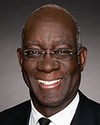Good evening Mr. Chair and members of the committee.
Thank you for inviting me to address you on the subject of the experience of women Veterans. I understand this is the first time that the Committee has dedicated a series of meetings solely focused on women Veterans. As a woman Veteran myself, I am honoured that you have chosen me to lead off this historic undertaking.
In Canada, women have had access to every occupation and trade of the Canadian Armed Forces since 1989, when the Canadian Human Rights Tribunal in Brown v. Canadian Armed Forces disagreed with the argument that women would negatively affect the operational effectiveness of its combat arms.
However, since its inception, the CAF is and has been a predominantly male institution. Its approach to implementing gender integration and equal opportunity was to simply absorb women into its ranks by ignoring their differences as much as possible. It seemed to make sense, and for the most part we servicewomen wanted only to be treated the same as everyone else.
In the Canadian Armed Forces, the policies on pay, benefits, promotion criteria, and performance requirements are applied equally to everyone. Even the physical fitness requirements evolved to a single common standard for all. However, women and men are different, and the effects of military service on women differ from the effects of service on men.
In October 2021, my office published in the Journal of Military, Veteran and Family Health a scoping literature review on women veterans of the Canadian Armed Forces and Royal Canadian Mounted Police. In this review of academic literature and government documents, we focused on the experiences of Canadian women veterans as a whole rather than on a single issue. I would strongly recommend the scoping review to the committee, as it provides a comprehensive summary of the current research findings on the experience of Canadian women veterans.
There is evidence that military service impacts women differently in terms of their physical health, their mental health, their financial security and their transition from military to veteran and from service life to civilian life. While much less is known about women members and veterans of the RCMP, there is no doubt in my mind that this group of women, with unique service to Canada, deserves equal attention.
What is missing from the research is the reason why there are such significant differences between the experiences of women and men veterans.
I would encourage researchers to look not only at these differences, but also to compare women veterans with women in the Canadian general population in order to more clearly identify the problems that are unique to them.
Most importantly, women veterans must be understood as a distinct group. While some female veterans are also spouses or widows or identify with other equity-deserving groups, just like some male veterans, they are a unique population with unique needs because of their sex or gender.
For example, the Veterans Affairs Canada, or VAC, Client Survey provides the Department with a way to gauge satisfaction with their programs and services. However, their reports don’t distinguish among the female or women respondents: rather, spouses, widows and women veterans are simply lumped together. I would suggest that this is unacceptable today. VAC must do a better job of understanding the needs of women veterans and this must be apparent.
During the course of our systemic reviews, my office has consistently recommended that VAC publish the GBA+ analyses required to inform all departmental activities. GBA+, when done correctly, will allow VAC to better understand how its policies may have differential impacts not only on women veterans but on all equity-deserving groups that seek access to the benefits and programs that Parliament has created for all of Canada's veterans.
I would also recommend proactive investment in the research questions that still remain all these many years since women have been serving in our Canadian Armed Forces and the Royal Canadian Mounted Police. We will not see equitable outcomes for women veterans and all equity-deserving veterans until this is prioritized in terms of both resources and data collection.
In summary, I would say this. While we just wanted to be one of the guys when I first started my military career in 1982, today we know that the differences and the many intersectional factors of our individual identities are key to understanding and meeting the unique needs of Canada's women veterans.
I cannot thank you enough for making this study a priority, and I look forward to your recommendations.
Thank you.




